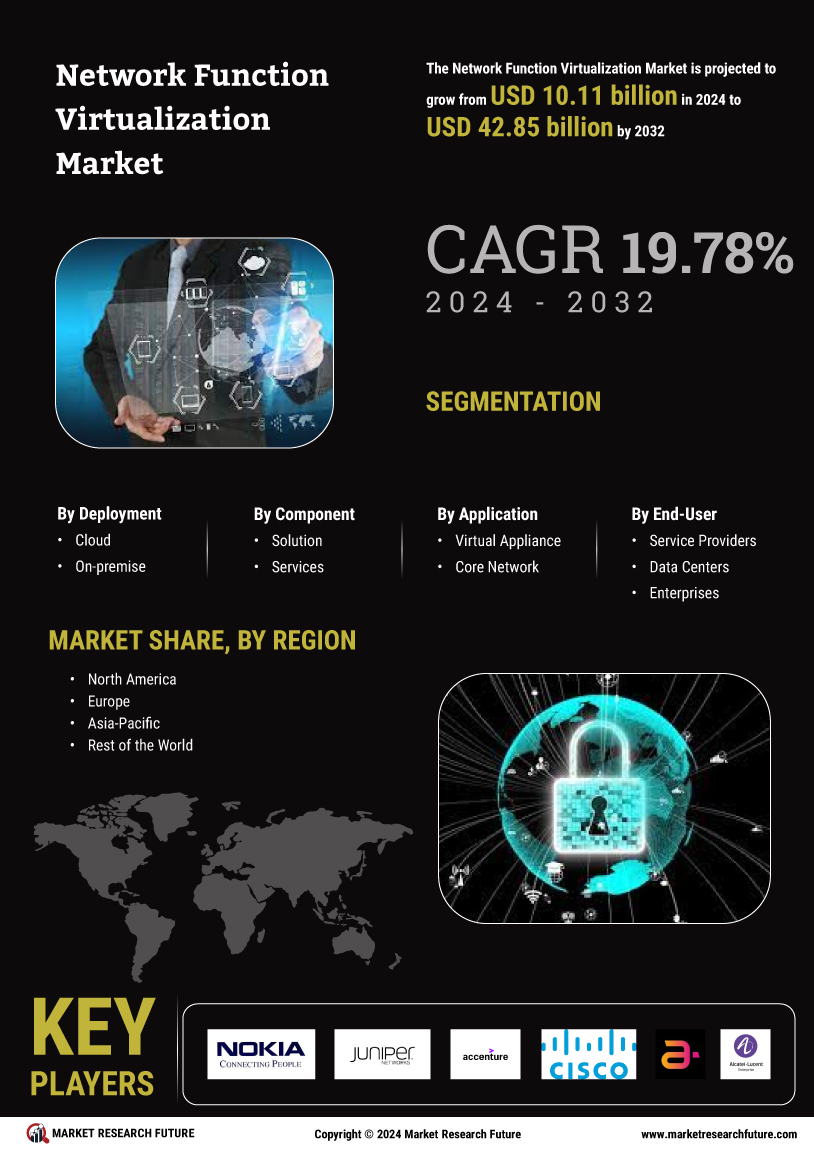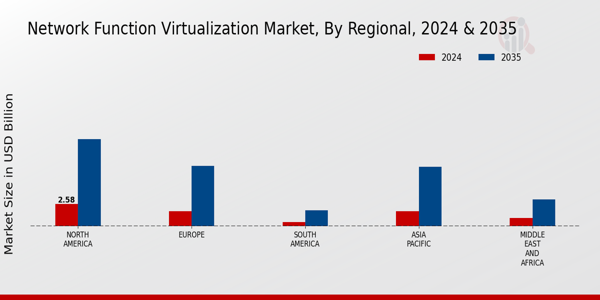Rise of 5G Technology
The advent of 5G technology is poised to be a major driver for the Network Function Virtualization Market. With the rollout of 5G networks, there is an increasing need for advanced network management solutions that can handle the complexities of high-speed data transmission. Network Function Virtualization enables service providers to deploy and manage network functions more efficiently, thus supporting the demands of 5G. It is projected that the 5G infrastructure market will reach a valuation of over 700 billion by 2026, further propelling the adoption of virtualization technologies. Consequently, the Network Function Virtualization Market is expected to benefit significantly from the integration of 5G capabilities, as operators seek to optimize their networks.
Growing Demand for Cost Efficiency
The Network Function Virtualization Market is witnessing a growing demand for cost efficiency among enterprises. Organizations are increasingly seeking ways to reduce operational expenses while maintaining high service quality. By virtualizing network functions, companies can eliminate the need for expensive hardware, leading to significant cost savings. According to recent estimates, the adoption of Network Function Virtualization can reduce capital expenditures by up to 30%. This trend is particularly evident in telecommunications, where service providers are transitioning from traditional hardware-based solutions to more flexible, software-driven architectures. As a result, the Network Function Virtualization Market is likely to expand as businesses prioritize cost-effective solutions that enhance their operational agility.
Increased Focus on Network Agility
In the current landscape, the need for network agility is becoming increasingly critical, driving the Network Function Virtualization Market forward. Organizations are recognizing the importance of rapidly adapting to changing market conditions and customer demands. Network Function Virtualization allows for the dynamic allocation of resources and the swift deployment of new services, which is essential in a fast-paced environment. This agility is particularly vital for service providers who must respond to competitive pressures and evolving technology trends. As a result, the Network Function Virtualization Market is likely to see heightened investment as companies strive to enhance their operational flexibility and responsiveness.
Growing Importance of Network Security
As cyber threats continue to evolve, the importance of network security is becoming a pivotal driver for the Network Function Virtualization Market. Organizations are increasingly adopting virtualization technologies to enhance their security posture. Network Function Virtualization allows for the implementation of advanced security measures, such as firewalls and intrusion detection systems, in a more efficient manner. The market for network security solutions is projected to grow significantly, with estimates suggesting a compound annual growth rate of over 10% in the coming years. This trend indicates that the Network Function Virtualization Market will likely expand as businesses prioritize robust security frameworks to protect their digital assets.
Adoption of Software-Defined Networking
The integration of Software-Defined Networking (SDN) with Network Function Virtualization is emerging as a key driver for the Network Function Virtualization Market. SDN provides a centralized approach to network management, allowing for greater control and flexibility. When combined with virtualization, it enables organizations to optimize their network resources and improve service delivery. The SDN market is expected to reach a valuation of approximately 100 billion by 2025, indicating a strong correlation with the growth of the Network Function Virtualization Market. This synergy between SDN and virtualization technologies is likely to foster innovation and drive further adoption across various sectors.


















Leave a Comment